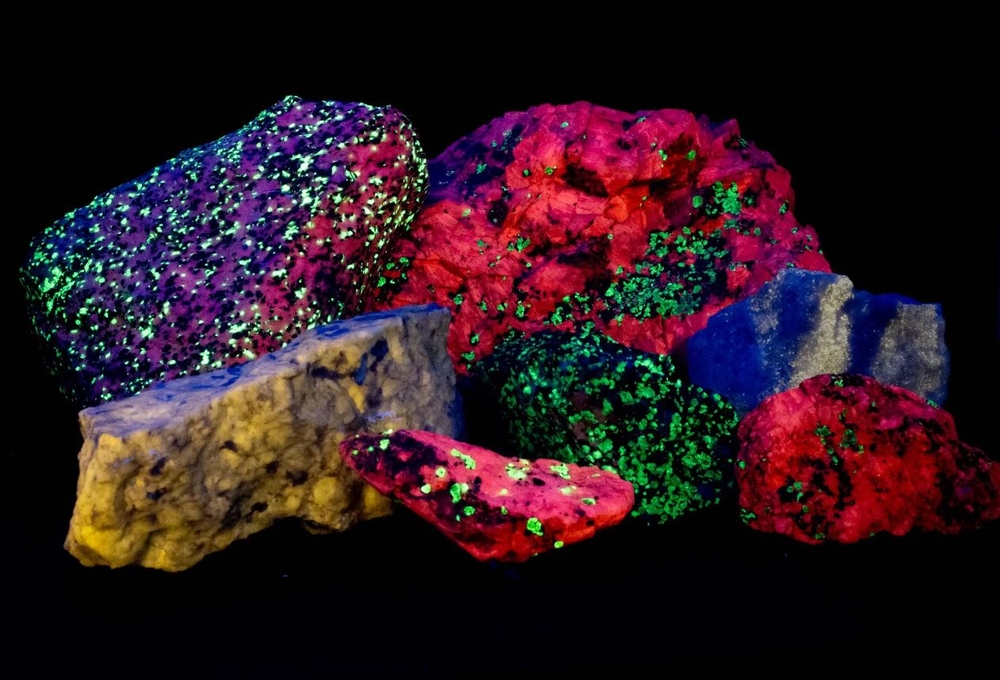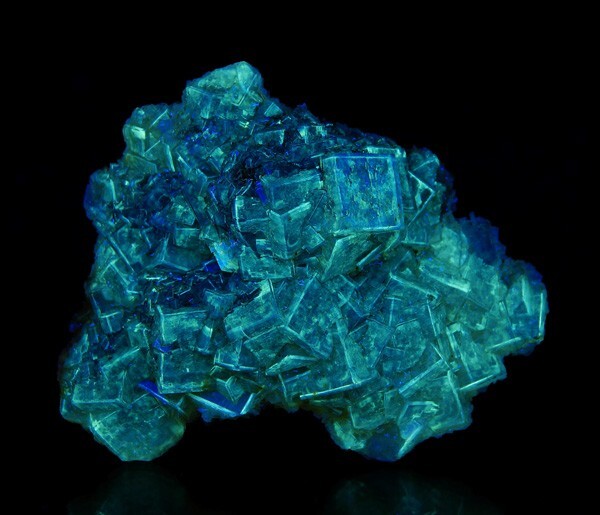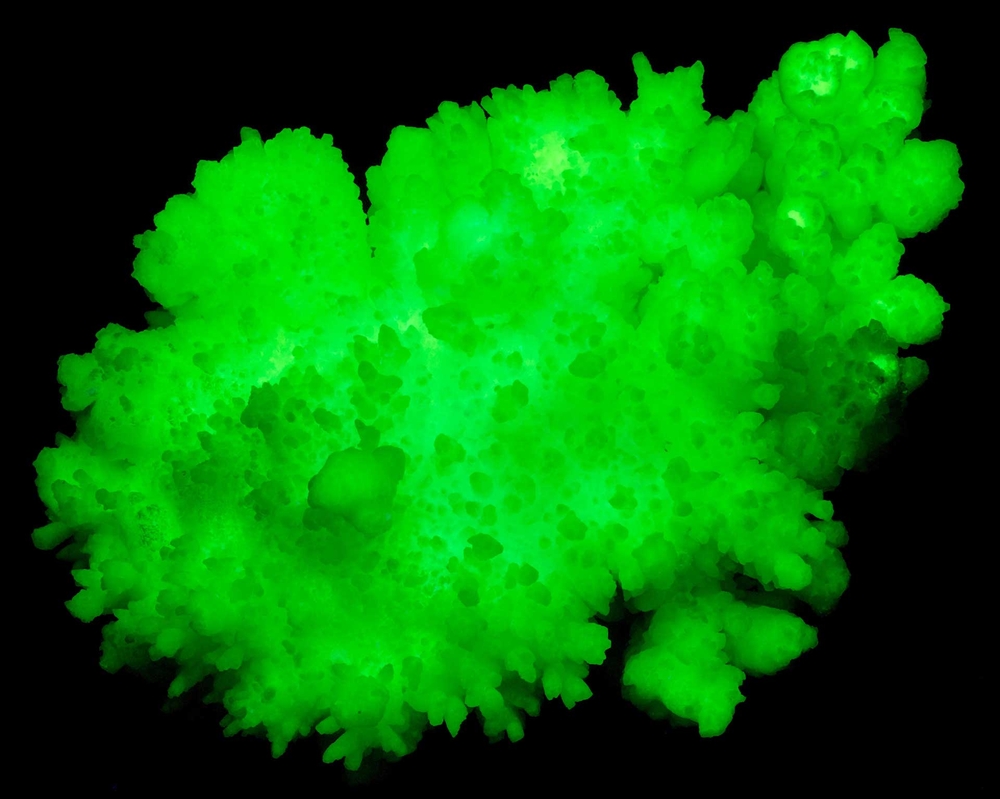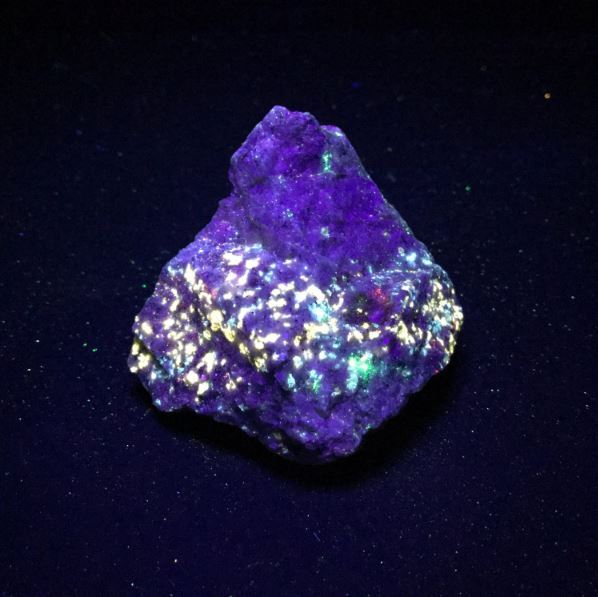You probably know that the diamond is one of nature's most prized creations, along with the ruby, emerald, and sapphire. Gold, on the other hand, is not inferior in splendor and beauty to precious stones and gets people's attention because of its important physical and chemical properties. Moreover, pearls are so exquisite that we could enjoy them forever!
In general, the aesthetic value of minerals is so comprehensive that it can hardly be wholly described in just a few sentences. We know of the existence of thousands, even tens of thousands of different types of minerals. Some are primarily used in the industry, while others aim solely to pamper our senses with their extraordinary shapes and colors. It is color that is the main topic of this article, in which we explain why and how some minerals have the property to change it under external influences - that's right - there are about 600 minerals that have the ability to change their colors or "glow in the dark".
If you are familiar with this phenomenon, you know that it is a magical spectacle that never gets boring to watch, and if you are hearing about it for the first time now, then you are about to learn something extremely exciting!
What is fluorescence?
The ability of some minerals to temporarily absorb some light and emit it at a different wavelength instantly afterwards is known as fluorescence. The color change in fluorescent minerals is most dramatic when they are illuminated with ultraviolet light in a dark environment.
Ultraviolet rays (and not only) have the ability to excite susceptible electrons in the atomic structure of the mineral, causing them to move to another orbital inside, and when these electrons return to their original orbital, they release a certain amount of energy in the form in light.
This change in color is due to the difference in the wavelength of the light emitted by the mineral and the one of the beam directed at it. That is why fluorescent minerals need a special type of rays to "glow" and this effect does not work when we direct another type of light at them, for example sunlight.
Fluorescent Minerals, photo: Rad Man Minerals
Unlike fluorescence, phosphorescence is observed when the mineral (or other object) continues to glow after the light source is turned off. Calcite, Celestite and Fluorite can sometimes exhibit such properties. Regardless the type of glow however, there are several factors on which its occurrence depends.
Most often, various impurities in the composition of minerals, also known as activators, contribute to the appearance of this phenomenon, but sometimes fluorescence is also possible due to the presence of some defects or organic imperfections in the crystal structure of the mineral. Calcite, which we gave as an example above, is interesting itself because it glows in different colors such as red, green and blue.
In the Rudolph Hall building, part of the campus of Yale University in the USA, a number of "luminous" minerals are stored, which delight students and tourists with their unusual qualities. In the short video below you can see how some relatively unattractive brown stones are transformed under the influence of UV rays:
"A mineral can contain different activators depending on where it was formed, so a specimen from Mexico can glow in a different color than a mineral found in Arizona, even though it's the same species," says Prof. Dr. Jill Pasteris, Professor of Earth and Planetary Sciences in the Department of Arts and Sciences. "On the other hand, some minerals are just good fluorescents," she adds.
And now we offer you a closer look at some of the most popular fluorescent minerals, among which are fluorite, aragonite, willemite and diopside.
Fluorite
Also known as fluorospar, fluorite is the mineral that gives the phenomenon of fluorescence its name. Discovered by George Stokes in 1852, fluorite remains one of the most popular phosphorescent semi-precious stones to this day. Most often it glows blue as the picture below shows, but sometimes it can change its color to red or other colors:
Fluorite under ultraviolet light
photo: minerain.com
Aragonite
Like calcite, aragonite is a carbon-based mineral that forms by precipitation in both saline and freshwater environments. The most beautiful specimens are reminiscent of flowers or corals, and under ultraviolet rays glow yellow, white, blue or green, as we can see in the photo below:
Phosphorescent aragonite
photo: uvminerals.org
Willemite
This mineral, named after King William I of Belgium, is an outstanding example of sustained fluorescence. When short-wave ultraviolet rays are directed at it, the mineral can glow for hours, the cause for the reaction being the chromophore manganese in it. Another interesting thing is the phenomenon in which willemite emits short-lived lights when struck with a hammer.
In this photo you can see clusters of several minerals, each glowing a different color
photo: naturesrainbows.com
Diopside
Part of the Pyroxene group, this mineral has a hardness of between 5 and 6 on the Mohs scale and it is found in various parts of the world - Russia, Italy, USA and Myanmar. But what makes it an interesting example here is neither its hardness nor its geological deposits, but its luminescence. Diopside emits a green color when illuminated with long ultraviolet rays and pale yellow when X-rays are directed at it.
diopside and norbergite under UV light
photo: elesyngaea.com
What is truly amazing about the phenomenon of fluorescence is that there is no practical reason for its occurrence. Fluorescence seems to exist only for an aesthetic purpose - perhaps to captivate us, like the twinkling stars at night, but also to remind us that sometimes we need to stop for a moment and give our attention to the beautiful things that are happening all around us.
Sources:
1. https://geoinfo.nmt.edu/publications/periodicals/nmg/9/n2/nmg_v9_n2_p25.pdf
2. https://geology.com/articles/fluorescent-minerals/
3. https://source.wustl.edu/2015/05/rocks-that-glow-in-the-dark/
4. https://www.rockngem.com/willemite-a-kings-zinc-mineral-and-fluorescing-beauty/
You have reached the end of this article.





